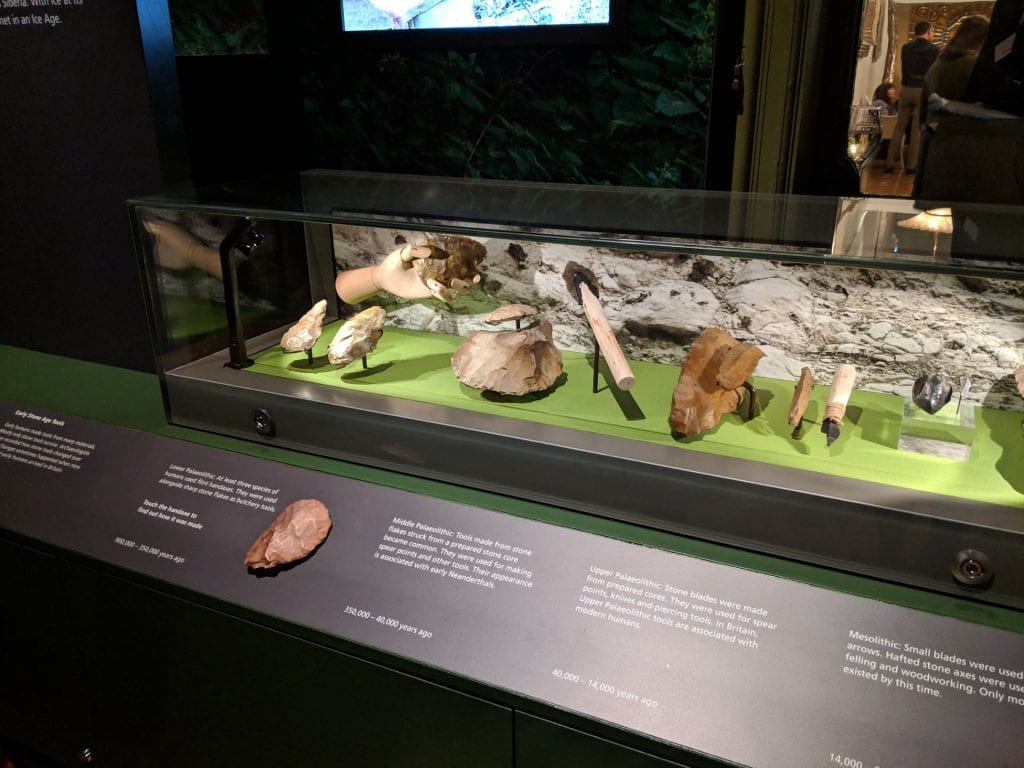On the 26th of January, the Archaeology Gallery at the Brighton Museum and Art Gallery opened its doors to the public. This new exhibition illuminates aspects of the local history, highlighting some of the stories of Brighton & Hove inhabitants from the Ice Age to the Saxon Age. We were lucky to be involved in this project from the very beginning providing various of our expertise and services including digitisation and 3D printing.
One of the very early activities we did was to scan with high accuracy using structured light 3D scanners the skulls of human remains that were found in Sussex. These skulls have been 3D printed and deployed by the artist Oscar Nilsson as the basis to create physical forensic facial reconstructions of the people who lived and died in the area. Their reconstructed busts and stories about their daily activities are presented in the different sections of the Gallery.
3D scanning of skulls
3D scanned and 3D printed skulls from Brighton Museum archaeology collection.
Physically reconstructed faces at the museum gallery.
Aiming at creating multisensorial experiences in order to enjoy and learn about our past, many of the Gallery’s archaeological artefacts were also scanned and 3D printed. In this way, the visitors are able to feel objects that are usually out-of-touch in museums and exhibitions. Visiting the gallery, is great to see how these replicas were painted and incorporated into the exhibits.
3D Replica of the chalk block. 3D replica of hand axe.
3D replica of hand axe.
 3D replica of Anglo Saxon coin.
3D replica of Anglo Saxon coin.
Special interest has also been given to children and families, who will have the opportunity to have a first-hand experience in testing their skills in assembling 3D pottery puzzles like archaeologists do. The development of this pottery puzzle was an interesting process, as we developed an approach which could be reproduced in order to test various ideas with regards to number and the size of puzzle pieces. The basic requirement was to have an interactive physical puzzle for kids to play with in the gallery. To do this, we use a digital 3D model of an authentic pot displayed in the gallery acquired using 3D scanning. We then developed a digital workflow to break the pot into a set of digital fragments. These fragments are then 3D printed and post-processed to achieve the desired result. The final puzzle is a great addition to the gallery for children to interact with.
We published a research paper “Digital workflow for creating 3D puzzles to engage audiences in the interpretation of archaeological artefacts” describing this workflow at the Visual Heritage 2018 conference, an international event which brings together researchers in cultural heritage and new technologies. This paper won a Best Paper Award at the event.
Scientific research and knowledge transfer have been key to the design of the New Gallery and the collaboration between the University of Brighton and the Brighton Museum and Art Gallery is expected to continue to unveil our past and enrich our future with state-of-the-art technological applications and experiences. Our collaboration with the Brighton Museum and Art Gallery demonstrates the impact our research has to our local heritage institutions. By co-creating solutions with professionals at the museum we have been able to advance scientific knowledge, while ensuring this has a practical application to heritage professionals.
This research was, partly supported by the Impact Knowledge Exchange Fund and is also linked to Myrsini Samaroudi’s PhD on exploring the properties and dynamics of digital fabricated artefacts in cultural heritage narratives for different audience groups.





